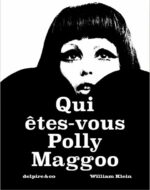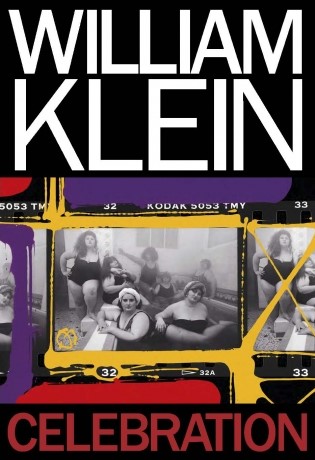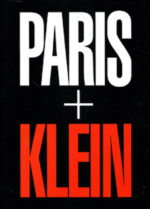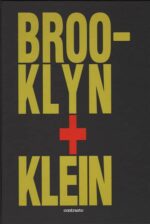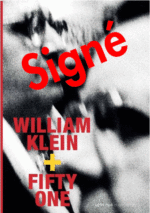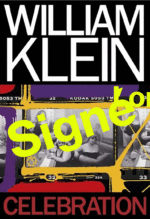Les images qu’il affectionne – photos, journaux, télés, inserts, affiches, tags, graffitis, collages, pubs, reportages, archives, documents, bavures, blancs-noirs du monde en déroute – sont venus s’insérer dans son cinéma imaginaire. Et donner ce style reconnaissable entre tous, le style de William Klein.
Klein a touché à divers genres, du conte de fées à la fable, du portrait brut à la caricature. Il a tourné pour la télévision, réalisé deux cent cinquante films publicitaires, dessiné ses affiches de films, mis en page et maquetté ce livre, comme tous ses livres… Sa marque : l’œil global. Ou le principe de la Dévoration.
“Among modern photographers, it could be said that Klein is the joker in the pack. Without formal training, he set out to discover a way of taking pictures—and invented a prototype. A nonconformist, a displaced person, he says with wariness now that he once believed in John Cage’s dictum that every spectator is always in the best seat.
“And like the work, the man can seem wayward—a wayward improvisation without (it seems) a center. “Anything goes,” Klein likes to say. He is a man of enormous talent and enormous defensiveness. At times he can remind you of the middle-aged hip photographer portrayed by Dennis Hopper in Francis Ford Coppola’s Apocalypse Now—a 60s figure, egotistical, and maddening. At other times, he can appear so boyish and enthusiastic, particularly about photography, that he seems more like Luke Skywalker going “Gee whiz!” at what the world contains. Both images of him, like any image, can prove deceptive.
“At the center of Klein’s work can be found an unexpected seriousness that virtually amounts to a declaration of faith. Klein succeeded in changing photography. Part of his talent was in showing us what the possibilities of a photograph could be. The root and heart of his work, from his early paintings and graphic designs to photography and films, reveal his fascination with the image of the city life and dream-nightmare around him—images that he first captured with a camera as if he were in a trance ; essay by Claire Clouzot, text by John Heilpern.


